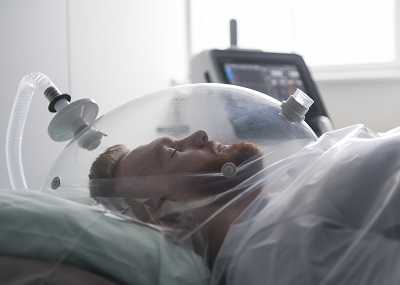Energy Metabolism Laboratory
The Energy Metabolism Laboratory at the Institute for Sport and Health, UCD was established in 2022 by Assistant Professor Katy Horner. Katy leads a research group focused on exercise physiology and nutrition to improve health and performance.
Current research projects include investigating appetite control, nutrition and exercise interventions in older adults, the impact of exercise on taste, gastrointestinal physiology and energy availability in student athletes. Current research is funded by the Irish Research Council, Food for Health Ireland and the Health Research Board.
Contact us: (opens in a new window)katy.horner@ucd.ie

Techniques used within our laboratory include:
- Resting Metabolism. Measurement of resting energy expenditure is conducted using state of the art indirect calorimeters.
- Activity Energy Expenditure. Measured via Actiheart. Actiheart combines heart rate measurement with accelerometery to determine activity energy expenditure.
- Total Energy Expenditure. By combining resting and activity energy expenditure with prediction of the thermic effect of feeding, we can estimate an individual’s total daily energy expenditure.
- Sedentary Behaviour. We assess time spent in sedentary behaviour via ActivPal accelerometer.
- Daily Energy Intake. Determined via Food Diary Analysis.
- Blood Pressure and Resting Heart Rate, via validated digital monitors.
- Heart Rate Variability. Determined via electrocardiogram (ECG).
- Taste, Appetite and Energy Intake. At the Institute for Sport and Health, we have a laboratory kitchen and feeding cubicles to measure taste perception, appetite and energy intake via validated questionnaires and test meals.
- Biomarker analysis: Within our studies, we regularly collect biological samples such as saliva and blood to better understand underlying mechanisms behind observed responses to nutrition/exercise.
In conjunction with the Human Performance Laboratory and High Performance Gym, we also conduct the following measurements in our studies:
- Body Composition Measurement via BodPod. BodPod takes less than 10 minutes and uses air displacement plethysmography to determine fat and fat free mass. We also conduct body composition measurement via bioelectrical impedance analysis.
- Cardiorespiratory Fitness. We perform maximal oxygen uptake and lactate threshold measurements, as well as submaximal tests and field tests.
- Strength and Power. We perform leg strength testing, as well as field based strength testing. We also perform Wingate testing to determine anaerobic power and capacity.